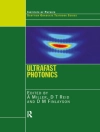This book reports on cutting-edge digital technologies and their applications in physical activity and sport. Gathering selected chapters from the 1st International Conference on Technology in Physical Activity and Sport, held virtually on November 24-27, 2020, from Seville, Spain, it offers a practice-oriented and evidence-based perspective on how technologies can be used for evaluation and control of different parameter relating to sport, physical activity, and health. It covers how digital technologies can be applied for training and monitoring purposes, and for improving athlete’s performance, how they influence sport habits in different populations, demonstrating their growing influence in sport businesses (such as fitness centers) and management, and provides new findings on the connection between physical activity and human health, suggesting some interesting directions for future studies. With a good balance of laboratory research and information relevant for professional trainers, this book will provide bioengineers, sport scientists, and physiotherapists with timely information and a multidisciplinary perspective on the use of digital technologies to improve fitness, wellbeing and health in different population groups.
Inhoudsopgave
Analysis of explosive force, sprint distance and high-intensity running in a match situation between Hungarian second-division soccer player.- Application and Efficacy of Portable Wearable Metabolic Devices.- My Proprioception, a Smartphone application to evaluate proprioception in sport: Proprioceptive profiles of female players of Basketball Balearic League of Mallorca Island.- The impact of Smartphone use on body composition, physical fitness, quality of life, and selective attention on office workers. A pilot study.- The tensiomiography amplitude stimulation determines the interpretation of the rectus femoris neuromuscular status after a repeated sprint training.- Benefits of virtual reality in people with chronic pain.- Could ‘exergaming’ used as a neurorehabilitation tool in patients diagnosed with a severe mental disorder? A scientific approach.- Estimating Energy Expenditure during Active Virtual Reality Gaming.- The importance of digital tools for adapting corporate wellness programs to the new situation caused by COVID-19. A real case study.- Analysis of the sport-related habits of fitness centres users according to their institutional mobile applications downloads.- Applying Machine Learning to estimate osteoporosis risk based on compliance with WHO guidelines for physical activity in postmenopausal women: Data from the 2017-18 National Health and Nutritional Examination Surveys (NHANES).












